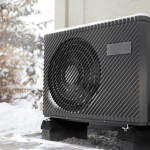
All Your Home Humidity Level Questions: Answered
Do you find yourself wondering about the right humidity level for your home and how to achieve it?
Whether you’re battling the sweltering heat of summer or trying to combat the dryness of winter, understanding and managing humidity levels can significantly impact your home’s comfort, health and energy efficiency.
For this blog, we’ve gathered a list of common questions about home humidity levels.
What is the ideal indoor humidity level for homes?
To maintain home comfort, humidity control is equally as important as temperature control. For optimal humidity control, you want your home’s relative humidity level to be between 40 and 55 percent.
Most regions have a recommended 30 to 50 percent humidity but states like Florida with naturally high humidity tend to require an indoor humidity closer to their outdoor humidity. However, you do not want your humidity level to exceed 60 percent, as this is when mold and mildew begin to grow.
How does humidity impact indoor comfort and health?
Reducing humidity not only makes the home more pleasant but also cuts down on mold, mildew and allergens. High humidity levels in a home lead to discomfort, where rooms feel stuffy and hot.
Additional risks of mold growth include nasal issues and asthma triggers for both your family and pets.
On the other hand, when your home humidity levels are too low, it can lead to dry skin, respiratory irritation and increased susceptibility to illness. This is why maintaining the right indoor humidity level is crucial for both comfort and health.
What are the common signs of high or low humidity in a home?
High Humidity:
- Condensation on windows, mirrors and other cold surfaces.
- Musty odors
- Dampness
- Mold spots or stains
Low Humidity:
- Dry skin and lips
- Increased static
- Cracking wood and furniture
- Increased dust
How can improper humidity levels affect energy efficiency?
Improper humidity levels can have a significant impact on energy efficiency in a home. Both high and low humidity levels can strain HVAC systems and lead to increased energy consumption.
Here is how improper humidity levels affect energy efficiency.
High Humidity:
- Increased Cooling Load: High humidity makes the air feel warmer than it actually is, leading to a higher cooling demand. As a result, your air conditioner will have to work harder and longer to achieve the desired indoor temperature, consuming more energy in the process.
- Overcooling Issues: In an attempt to combat the discomfort caused by high humidity, some homeowners might set their air conditioners at lower temperatures. This can lead to overcooling, wasting energy and driving up utility bills.
- Short-Cycling: High humidity can cause the air conditioner to cycle on and off more frequently. Short-cycling not only reduces energy efficiency but also puts additional stress on the HVAC system, potentially leading to premature wear and tear.
- Increased Fan Energy Consumption: The HVAC system’s fan, used to circulate air, will need to work harder in high humidity conditions. This extra effort increases the fan’s energy consumption.
Low Humidity:
- Higher Heating Demand: In cold and dry conditions, low humidity can cause the air to feel cooler, leading to increased heating demand. As a result, your heating system will consume more energy to maintain the desired indoor temperature.
- Overheating Issues: To counteract the sensation of coldness, some homeowners may raise their thermostat settings, leading to overheating and unnecessary energy usage.
- Increased Fan Energy Consumption: Just like in high humidity conditions, low humidity can cause the HVAC system’s fan to work harder to distribute air throughout the home, increasing energy consumption.
- Dry Air Infiltration: Dry air can cause gaps and cracks in the building’s envelope, leading to air leakage. This, in turn, increases the workload on the heating system as it tries to compensate for the heat loss.
How do I combat high humidity levels in the home?
Combatting high humidity levels requires a combination of both preventative measures and active humidity control strategies.
Here are some effective ways to lower and manage high humidity:
- Ventilation: Ensure proper ventilation throughout your home. Use exhaust fans in bathrooms, kitchens, and laundry rooms to expel humid air outdoors. Also, consider opening windows and doors on cooler days to allow fresh air to circulate and reduce indoor humidity.
- Dehumidifiers: Invest in a dehumidifier to target and remove excess moisture from the air. Portable dehumidifiers can be used in specific rooms, while whole-house dehumidifiers can be integrated with your HVAC system for more comprehensive humidity control.
- Fix Leaks and Insulate: Properly insulating your home can prevent excess moisture from seeping indoors.
- Use Houseplants Sparingly: While houseplants can improve indoor air quality, too many plants in a humid environment can release excess moisture into the air.
- Limit Activities that Generate Moisture: Activities like cooking, showering and doing laundry can add moisture to the air. Use exhaust fans or open windows during these activities to reduce humidity levels.
- Cover Aquariums and House Plants: If you have an aquarium or house plants with moist soil, cover them to minimize moisture evaporation.
- Use Smart Thermostats: Some smart thermostats come with built-in humidity sensors and control capabilities. These thermostats can adjust humidity settings and work with your HVAC system to maintain optimal humidity levels automatically.
What are the benefits of using a smart thermostat to manage humidity?
Using a smart thermostat to manage humidity in your home offers several benefits that can significantly enhance your indoor comfort, energy efficiency and overall well-being.
Smart thermostats allow for a level of precise humidity control that cannot be replicated by traditional thermostats.
Smart thermostats are equipped with advanced sensors and algorithms that allow for precise monitoring and control of indoor humidity levels. They can automatically adjust humidity settings based on real-time data, ensuring that your home stays within the optimal comfort range.
Smart thermostats are designed to be energy-efficient. By managing humidity levels and temperature settings intelligently, they can help you save on heating and cooling costs. With smart thermostat systems like Ecobee, you can even control your home comfort system from your smartphone.
Control Your Home Humidity Levels with Barineau
Maintaining indoor humidity within the recommended range helps create a more pleasant living environment, reduces the risk of mold and allergen growth and supports better indoor air quality.
While there are some easy fixes for imbalanced humidity levels, if you’re in doubt, don’t hesitate to call Barineau Heating and Air Conditioning. Our team of skilled technicians is available around the clock to help with all of your home comfort needs. We also offer top-of-the-line Ecobee smart thermostats and installations.
You can visit the GET HELP NOW page or call 850.580.4029.




